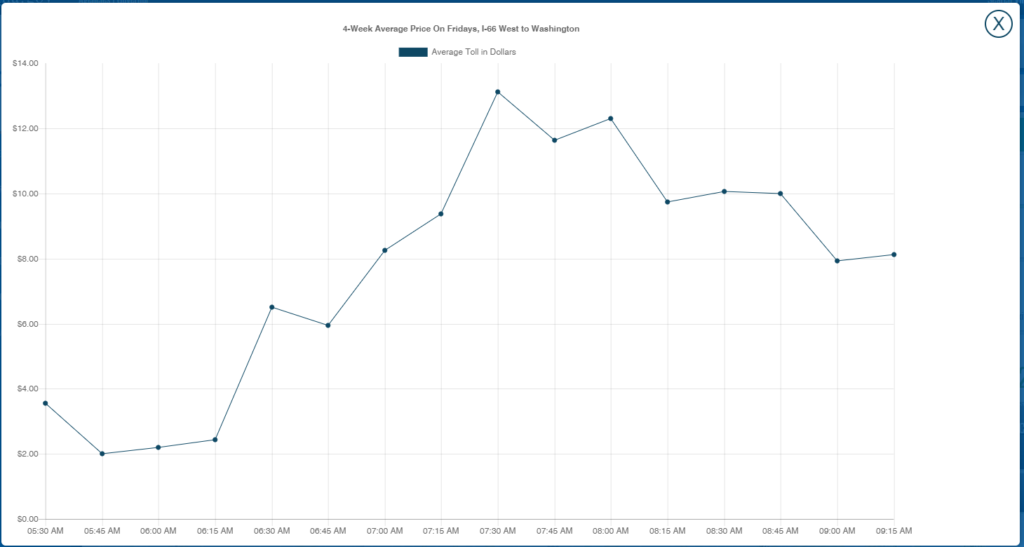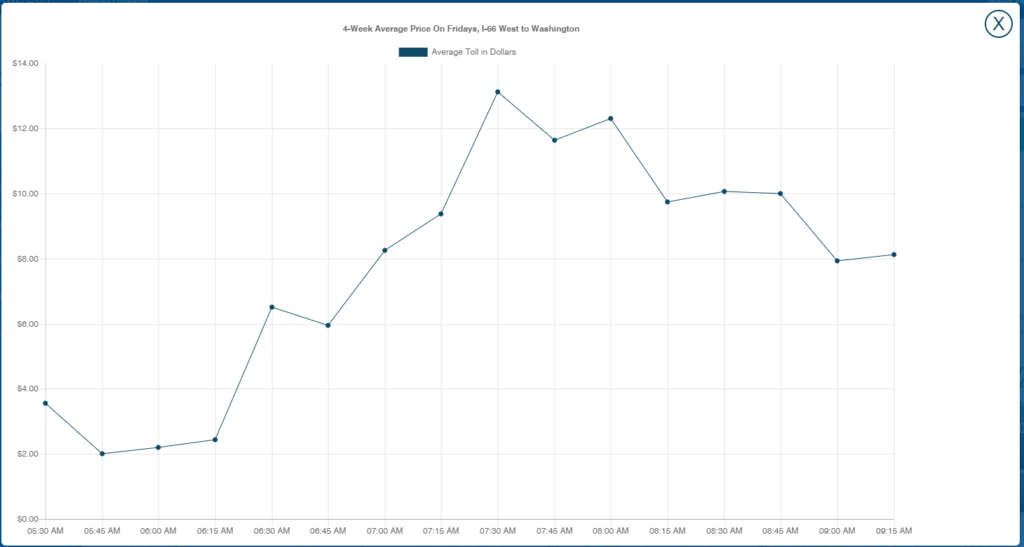WASHINGTON — Virginia has lowered rush-hour tolls for solo drivers on Interstate 66 inside the Capital Beltway, with a change to the pricing algorithm implemented this summer.
While the average toll paid in August largely dropped due to reduced traffic while people were on vacation, Virginia Department of Transportation Division Administrator for Tolling Operations David Caudill said in an interview that the tolls would not have dropped as much without a change made in July to the way the automated system calculated the amount of traffic on the road.
“If you had the same volume back two months ago, you would have seen a higher toll. So in September, we got bigger volumes because you know school’s back in session, tolls give the appearance of a higher rate back up to $40-plus, but that’s due to volume. It would have been higher had we not made the changes that we made in July,” Caudill said.
The change to the traffic density calculations applies in both the morning and afternoon.
“It seems to have worked and not impacted speeds. Keep in mind, we’ve still got to maintain traffic, the HOV users should not be impacted when we make changes like this,” Caudill said.
That indicates the state did not have to charge tolls quite so high as it had been in the first months after the tolling and expanded HOV hours began last December.
Additional changes to the tolling algorithm are planned one at a time so that Caudill’s team can monitor the discrete impact of each change to the system.
“We feel, on the one that we did in July which directly impacted the dynamic pricing, we got a good result on that, and the next one we look at….the volumes on Fridays are clearly lower in the mornings than they are any other time during the rest of the week, we think there’s an opportunity there to change the dynamic pricing parameters,” Caudill said.
Story continues underneath chart

The changes do not mean an end for $40 toll prices showing up at the height of rush hour in the middle of the week though.
“The single-occupant price is high during very small periods of the four-hour window. It just indicates there is a demand and people need to get someplace quickly,” Caudill said. “Typically it’s in that period between 8 o’clock and 8:45 which would have been previously HOV only.”
Story continues underneath chart

A review of publicly available data shows the average toll for a full trip from the Beltway to D.C. has been peaking above $35 most days lately around 8:30 a.m., with a drop off to near $20 by 9 a.m.
Toll users can check four-week average prices for their trips on the state’s tolling website.
“You can see on that graph that maybe a 15 minute, 20 minute change in your start of your commute makes a big difference if you’re a single-occupant vehicle and want to pay to use the facility,” Caudill said.







